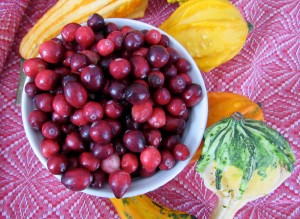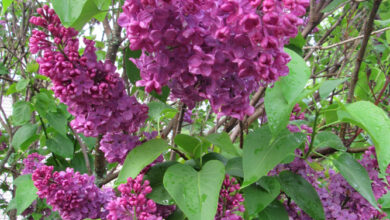Versatile cranberries can be savory or sweet

The seasonal flavors of fall are so wonderful and welcome and linked to garden and farm fruits and produce: pumpkin spice, apple and cranberry are a few. I love cranberries and look forward to their starring role in both savory and sweet recipes during the holidays and through the winter.
We often associate cranberry growing with the bogs of New England, but cultivation is not limited to that area alone. During my family’s annual road trip during the summer to Minnesota, we pass through the cranberry growing region of Wisconsin. The fields (bogs) are visible from the highway and cranberry cheddar is a popular item at the numerous cheese shops.
It is very possible to grow your own cranberries at home. The only reason cranberries are grown commercially in bogs, is because they are most easily harvested by flooding the fields – a process which allows the low-growing berries to float. The crop is then picked with a unique style of mechanical harvesting.
Cranberries (Vaccinium macrocarpon) are native to North America and are typically found growing naturally in boggy areas because of their affinity for moisture and highly acidic soil.
They are very low-growing, reaching only about four inches in height with thin stems. Cranberries bear their bright red fruits in the fall.
I’ve been reading up about planting cranberries in a home garden. Lee Reich, Ph.D., author of “Landscaping with Fruit,” recommends that it is best to create a special raised bed for cranberries and incorporate lots of peat moss to provide soil texture and organic matter that the plants need. Acidify the soil with sulfur – cranberries prefer a soil pH between 4 and 5.5. Fertilizer should be used sparingly, and make sure the area is well watered. Droughts can kill cranberry plants.
Garden catalogs are a good source for cranberry plants. Just a few plants, when happy with their growing conditions, will spread to form a mat, or ground cover. If you have acidic soil conditions, cranberries can make an interesting ground cover for landscaping purposes.
Cranberries come from the same genus as blueberries and lingonberries – both of which love acidic soil conditions. My soil tests to the other end of the pH scale, so I know I would need to do some major soil amending to get cranberries to grow.
The plants are evergreen, but leaves take on a purple tinge in the winter and are very cold hardy, requiring a cold winter to be productive.
According to the Maine Organic Farmers and Gardeners website, cranberries should be harvested before the first frost and will continue to ripen in a warm, dry place for several weeks. The berries can then be put in the freezer without blanching, retaining much of their nutrition when preserved this way.
As you plan and dream about the upcoming growing season during these “off” months, you might want to consider giving this deep red and nutritious berry a try.




